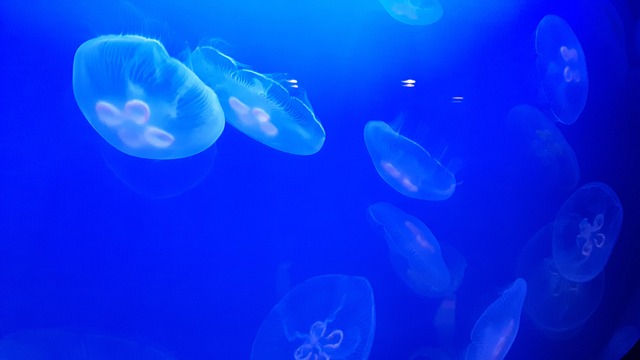Aquascaping transforms aquariums into underwater landscapes using strategic lighting techniques for driftwood aquarium layouts. By adjusting light placement and intensity, you can create depth and dimension. Driftwood pieces craft multi-layered terrain, providing hiding spots and territorial markers. LED or HID lights enhance the beauty and complexity of these setups, with customizable colors and deep water penetration. To achieve a stunning 3D effect, carefully select complementary driftwood pieces and utilize high-quality lighting aimed upwards and towards the sides of the tank.
Discover the art of aquascaping and unlock the secret to creating stunning depth and dimension in your driftwood aquarium layouts. This comprehensive guide explores lighting techniques that transform your aquatic landscape into a captivating 3D experience. Learn how natural elements, like driftwood, play a pivotal role in defining space and visual interest. From understanding the fundamentals of aquascaping to selecting the right lights and practical tips for design, elevate your aquarium to new heights with these expert insights.
Understanding Aquascaping and Lighting for Depth
Aquascaping is an art form that transforms ordinary aquariums into mesmerizing underwater landscapes. When combined with strategic lighting techniques, it becomes a powerful tool to create depth and dimension within your driftwood aquarium layouts. Understanding how light interacts with different elements in the tank is key to achieving this visual effect.
Lighting plays a significant role in highlighting the various layers of your aquascaping design. By adjusting the placement and intensity of lights, you can make specific features stand out or recede into the background, thus creating a sense of depth. For driftwood aquarium layouts, which often feature dense vegetation and intricate structures, careful lighting considerations are essential to prevent shadows from overwhelming the space. Balancing light sources at different heights and angles allows for a more even illumination, ensuring every part of the aquascaping design is showcased to its fullest potential.
The Role of Driftwood in Creating Dimension
Driftwood plays a pivotal role in aquascaping, particularly when crafting complex and realistic underwater landscapes. Its organic beauty adds depth and dimension to aquarium setups, transforming them into captivating aquatic gardens. By strategically placing driftwood pieces within a driftwood aquarium layout, hobbyists can create natural-looking terrain that provides both aesthetic appeal and functional benefits for aquatic inhabitants.
The strategic use of driftwood allows for the creation of different levels, from towering stacks that mimic natural forest structures to smaller branches and roots that add texture and depth. These elements not only serve as hiding spots and territorial markers for fish but also encourage natural behaviors, enhancing the overall health and well-being of aquarium residents. In addition, driftwood helps to break up light beams, creating a more dynamic lighting pattern that further emphasizes the three-dimensional aspect of the aquascape.
Types of Aquarium Lights and Their Effects
Aquarium lighting plays a pivotal role in aquascaping, enhancing the beauty and depth of underwater landscapes, especially in intricate driftwood aquarium layouts. Different types of lights offer varied effects, catering to diverse aesthetic preferences. LED lights are a popular choice for their energy efficiency and customizable color options, allowing hobbyists to create vibrant or subtle scenes. These lights can simulate natural sunlight, promoting healthy plant growth, or provide bold spectral colors for dramatic effect.
High-intensity discharge (HID) lights, such as metal halide or ceramic metal halide lamps, are known for their intense brightness and ability to penetrate water deeply. This makes them ideal for larger aquariums with complex driftwood structures where plants may require higher light intensities. HID lights can dramatically reveal the textures and contours of driftwood, adding depth and dimensionality to the overall aquarium scenery.
Tips for Achieving a Stunning 3D Aquarium Layout with Driftwood
To achieve a stunning 3D aquarium layout with driftwood, start by selecting pieces that complement your aquatic ecosystem’s theme and size. Diversify the types and sizes of driftwood to create depth and visual interest. Larger branches should be placed at the back for a natural background, while smaller twigs can be used to fill in gaps and add intricate details.
Lighting is crucial for enhancing the depth and dimension of your driftwood aquarium layouts. Utilize high-quality LED lights that offer adjustable color temperatures and intensity. Aim lights slightly upwards and towards the sides of the tank to create a glowing effect on the driftwood, bringing out its natural textures and colors. This technique, combined with strategic placement, will make your driftwood stand out, adding an element of depth that captivates viewers.
Aquascaping is an art that transforms aquariums into captivating underwater landscapes. By combining lighting techniques, such as positioning LED lights strategically and utilizing different color temperatures, with natural elements like driftwood, you can create stunning 3D driftwood aquarium layouts. This guide has explored the fundamentals of aquascaping, the dramatic effects of light, and practical tips for crafting immersive aquatic environments. Incorporating these techniques will not only deepen your aquarium’s aesthetic appeal but also enhance its ecological balance.
